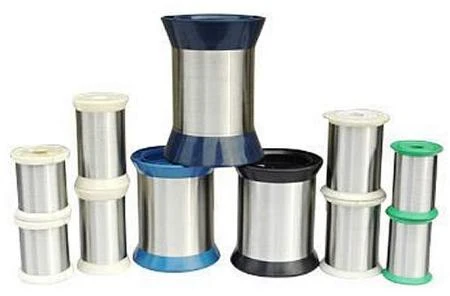 TEL:
+86-13102802206
TEL:
+86-13102802206
 Email:
fencenetting@china.com
Email:
fencenetting@china.com
 Language
Language
 TEL:
+86-13102802206
TEL:
+86-13102802206
 Email:
fencenetting@china.com
Email:
fencenetting@china.com
 Language
Language


Understanding SST Wire A Key Component in Modern Applications
In the ever-evolving landscape of technology and manufacturing, the materials and components we use play a crucial role in determining the efficiency and effectiveness of various applications. One such component that has garnered attention is SST wire, which stands for Stainless Steel Wire. This versatile material has become increasingly popular across numerous industries, including automotive, construction, telecommunications, and electronics.
What is SST Wire?
SST wire is made from stainless steel, an alloy known for its excellent resistance to corrosion, durability, and aesthetic appeal. The unique composition of stainless steel typically includes iron, chromium, nickel, and other elements that enhance its properties. The wire is produced in various diameters and can be crafted into different forms such as coils, rods, or strands, depending on its intended use.
Applications of SST Wire
1. Automotive Industry In the automotive sector, SST wire is utilized for various applications, including manufacturing springs, wire ropes, and fasteners. The corrosion resistance of stainless steel makes it an ideal choice for components exposed to harsh environmental conditions, contributing to vehicle longevity and safety.
2. Construction and Architecture SST wire finds extensive use in the construction industry, especially in reinforcing concrete and architectural designs. Its strength and resistance to rust help maintain structural integrity, making it a reliable option for both residential and commercial buildings.
3. Telecommunications As the demand for high-speed internet and reliable connectivity continues to rise, SST wire plays a pivotal role in the telecommunications infrastructure. It is commonly used in the production of cables and connectors, ensuring that signals are transmitted efficiently and without interference.
4. Electronics Industry In electronics, SST wire is employed in the production of various components, including connectors, circuit boards, and support frames. The material's conductivity and resistance to oxidative degradation enhance the performance and lifespan of electronic devices.

Advantages of SST Wire
The popularity of SST wire can be attributed to several key advantages
- Corrosion Resistance One of the most significant benefits is its ability to resist oxidation and corrosion, making it suitable for use in a wide range of environments, from marine applications to industrial settings.
- Strength and Durability SST wire is known for its high tensile strength, which makes it capable of withstanding heavy loads and stress. This durability ensures that products made from SST wire maintain their integrity over time.
- Aesthetic Appeal Stainless steel has a sleek, modern appearance that is often preferred in design. It can be polished to a reflective sheen or left in a matte finish, providing versatility in aesthetic applications.
- Ease of Fabrication SST wire is relatively easy to work with, allowing for various production techniques, including welding, bending, and shaping. This adaptability is crucial for custom applications where specific dimensions and characteristics are required.
Conclusion
As industries continue to innovate and seek materials that provide durability, performance, and aesthetic value, SST wire stands out as a vital component in modern manufacturing and construction. Its widespread applications and array of benefits make it an indispensable resource in various domains. Understanding the significance of SST wire not only highlights the advancements in material science but also reflects the ongoing quest for quality and efficiency in an increasingly competitive global market. As we move forward, the reliance on durable materials like SST wire will undoubtedly increase, shaping the future of technology and infrastructure development.